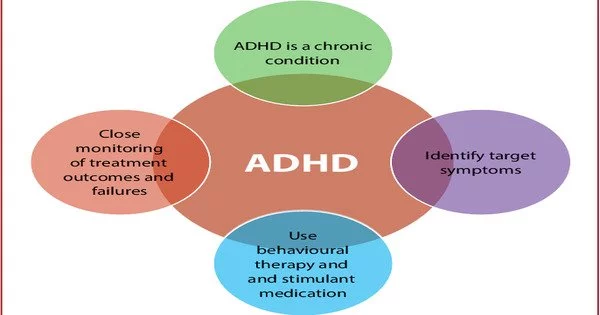ADHD (attention deficit hyperactivity disorder) is a chronic condition that affects millions of children and frequently persists into adulthood. It is a neurodevelopmental disorder characterized by persistent inattention, hyperactivity, and impulsivity that is impairing in multiple contexts and is otherwise age-inappropriate. ADHD is characterized by a number of persistent issues, including difficulty maintaining attention, hyperactivity, and impulsive behavior.
Children with ADHD may also struggle with low self-esteem, strained relationships, and poor academic performance. Symptoms may lessen with age. Some people, however, never completely outgrow their ADHD symptoms. They can, however, learn successful strategies.
Symptoms
Executive dysfunction causes ADHD symptoms, and emotional dysregulation is regarded as a core symptom. Problems paying attention in children can lead to poor academic performance. ADHD is linked to other neurodevelopmental and mental disorders, as well as some non-psychiatric disorders, which can result in additional impairment, particularly in modern society. Although people with ADHD have difficulty focusing on tasks that they are not particularly interested in completing, they are frequently able to maintain an unusually prolonged and intense level of attention for tasks that they find interesting or rewarding; this is known as hyperfocus.
Causes
In the vast majority of cases, the precise causes of ADHD are unknown. ADHD runs in families and has a 74% heritability rate, so genetic factors play an important role. Toxins and infections during pregnancy, as well as brain damage, are potential environmental hazards. Despite popular belief, it does not appear to be related to any particular parenting or discipline style.
It is normal for children to have difficulty focusing and behaving at times. Children with ADHD, on the other hand, do not simply grow out of these behaviors. The symptoms persist, can be severe, and can cause problems at school, home, or with friends.
Diagnose
It affects approximately 5-7% of children diagnosed using the DSM-IV criteria and 1-2% of children diagnosed using the ICD-10 criteria. Rates are comparable across countries, with the main difference being how it is diagnosed. ADHD is diagnosed roughly twice as frequently in boys as in girls, and 1.6 times more frequently in men than in women, though the disorder is often overlooked in girls or diagnosed later in life because their symptoms differ from diagnostic criteria.
About 30-50% of people diagnosed with ADHD as children continue to have it as adults, with 2.58% of adults having ADHD that started as a child. Adults often develop coping skills to compensate for their impairments, as hyperactivity is usually replaced by inner restlessness. The condition can be difficult to tell apart from other conditions, as well as from high levels of activity within the range of normal behavior.
Recommendation
ADHD treatment recommendations vary, but typically include a combination of medications, counseling, and lifestyle changes. As a first response, the British guideline emphasizes environmental changes and ADHD education for individuals and caregivers. If symptoms persist, age-appropriate parent-training, medication, or psychotherapy (particularly cognitive behavioral therapy) may be recommended.
Medication and behavioral therapy are recommended together in Canadian and American guidelines, except for preschool-aged children, for whom behavioral therapy alone is the first-line treatment. Stimulant medications are the most effective pharmaceutical treatment, but they have side effects and any improvements will be lost if the medication is stopped.
















